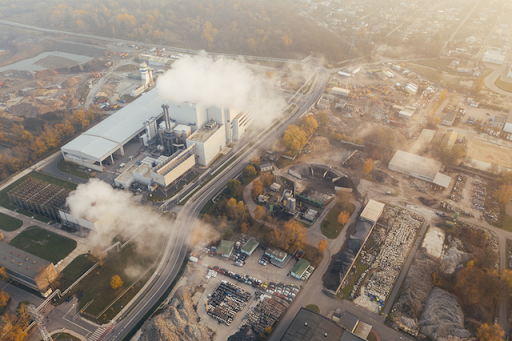
The need for sustainable business practices, especially in the industrial sector, is no longer open for debate. In the words of the United Nations, climate change is the defining issue of our time. Reversing the damage that has been done demands increased sustainability efforts from industrial companies, which produce nearly 30 percent of total greenhouse gas emissions in the US.
The question that leaders in the industry space are now wrestling with is how to become more sustainable without negatively affecting their profitability. Eugenie.ai, a global leader in helping heavy industries to reduce their carbon footprint, has the answer to that question.
"The best approach for reducing carbon emissions is reducing them at the source," says Dr. Soudip Roy Chowdhury, Founder, and CEO of Eugenie.ai. "Other options, such as carbon sequestration or shifting to renewable energy sources, suffer from systemic issues; they have high costs and questionable impacts. By adopting an approach that reduces emissions at the source, organizations can make a measurable difference without affecting their economic goals."
Eugenie.ai's technology solutions have been used by companies around the world to improve sustainability by tracing emissions to specific assets and process-level performance. Its unique approach of combining spatiotemporal emission data from satellite and other LiDAR (light detection and ranging) data sources with SCADA (Supervisory control and data acquisition) and IoT(the Internet of things) data from machines and processes allow it to track, trace, and optimize processes that are the root-cause for anomalies in the emission patterns. Gathering and analyzing data in this way enables Eugenie.ai to deliver real-time actionable insights to operation personnel for reducing emissions by optimizing systems and processes.
"In many industrial plants, outdated machines and asset management tools create a digital divide between physical asset management and digital strategy," Dr. Roy Chowdhury explains. "Eugenie.ai's patented explainable AI and augmented analytics (combining knowledge of physics of the system with data and AI) framework fixes this problem. Our approach is generalizable across machines and industries irrespective of where they are in their digital transformation journey. Combining physics with AI makes our insights humanly interpretable, understood, and actionable - unique whitespace that is overlooked by the enterprise AI software community today."
Eugenie addresses another sensitive yet pertinent problem of a largely used existing carbon reduction technique; carbon offsetting. According to a few recent studies, including those done by PNAS and Source Material, it is found that only 6% of the overall voluntary carbon emission purchased from the marketplaces were useful for real carbon emission reduction. This kind of offsetting approach also encourages carbon leakage malpractice.
Carbon leakage occurs when sustainability controls shift unsustainable practices from one region to another where controls are less strict. Such practices encourage purchasing voluntary carbon credits from re-deforestation projects across the globe. This approach does not solve the problem of carbon emission reduction at the source.
Unlike these, Eugenie reduces the emission at the source (Scope 1) for heavy emitters using AI for process optimization. Reducing emissions at source is a more reliable and sustainable practice than electrification. With electrification, which involves using electric equipment rather than conventional equipment for industrial processes, emissions are only significantly reduced if the electricity is sourced from a green energy grid. Unfortunately, that is not the case today.
"Reducing carbon emissions at the source goes beyond sustainability to empower organizations to capture new business models," explains Dr. Roy Chowdhury. "For example, green steel sells at a 50 percent premium when compared with conventional steel. Reducing emissions at the source is the most promising way of converting the existing steel manufacturing process to a green process line. The increasing demand for green commodities in society is acting like a catalyst for industries to feel the pressure to reduce their emissions faster and more efficiently. After all, it is the green commodity channel that promises to improve the business while improving the world."









